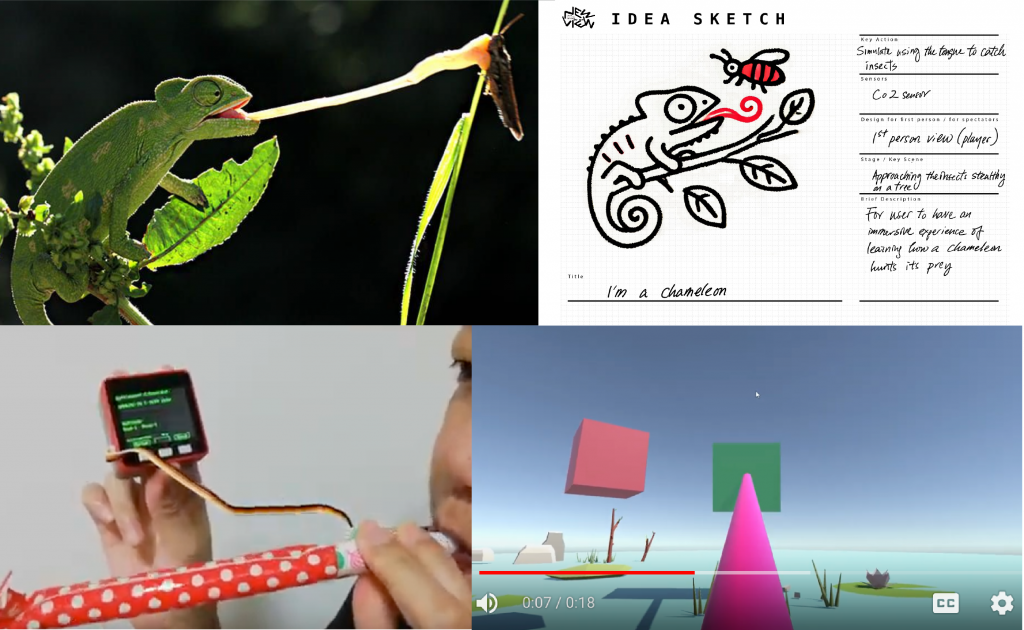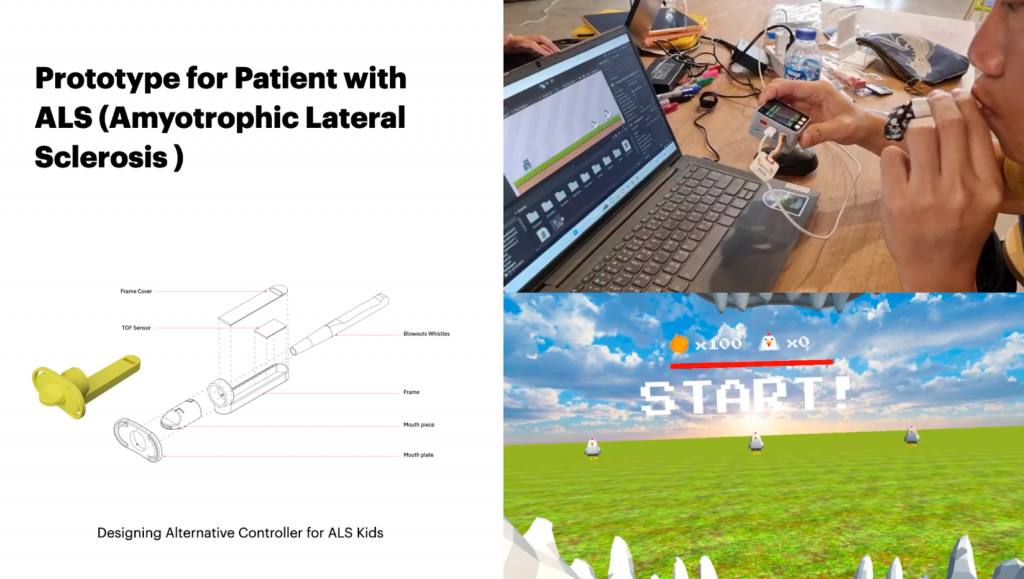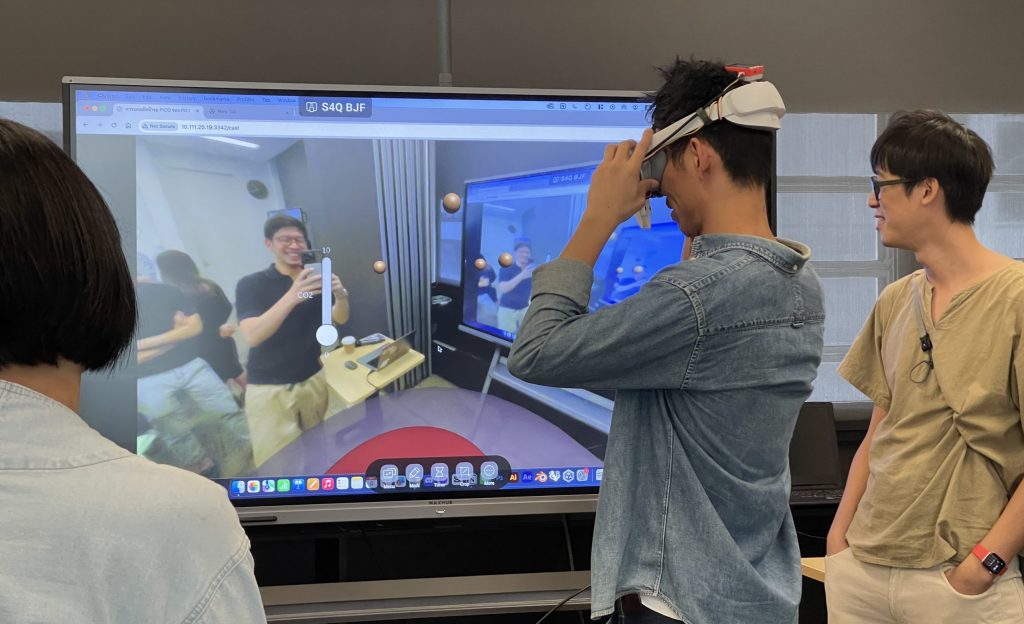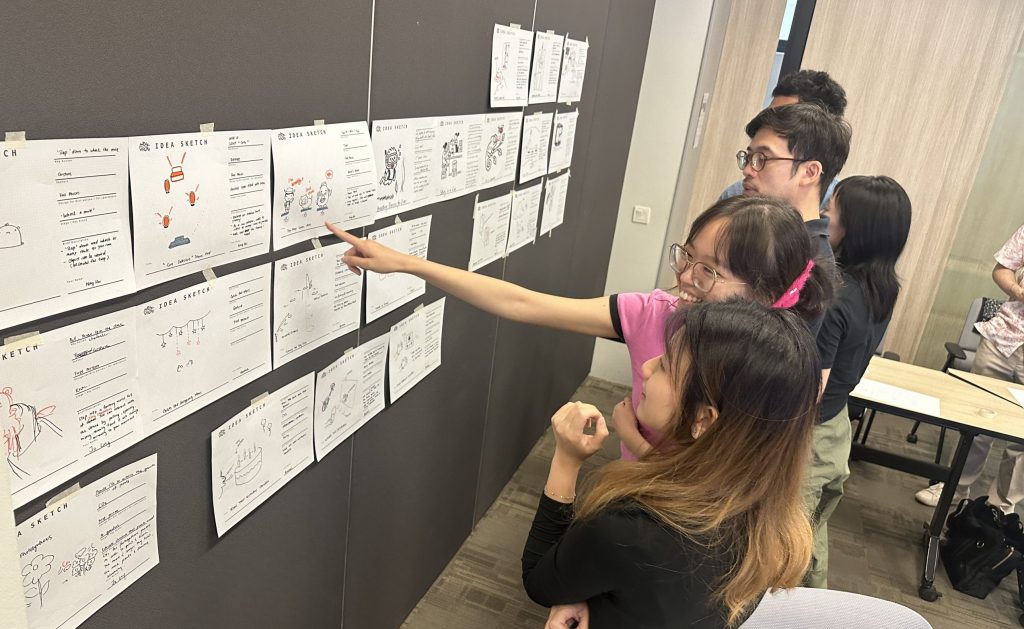Project Case
November 4, 2024
FabCafe Global Editorial Team
As part of this year’s Singapore Design Week, Loftwork hosted a two-day extended reality (XR) workshop on October 4–5, designed for students, educators, and design professionals. The workshop introduced participants to the intersection of the physical and digital worlds, showcasing the potential of physical computing in immersive technologies.
The potential of extended reality (XR) goes beyond the default interactions with smartphones or tablets (e.g., using a touchscreen to activate AR filters on FaceTime). Loftwork has developed a toolkit for creators to explore how to generate explicit or implicit inputs from users by detecting breath, gestures, heartbeats, and movement. This ability to tap into users’ intuitive motions can broaden the possibilities of interactive design. For example, what if a designer wants to create an experience where the user mimics a chameleon catching prey with its tongue? Using a CO₂ sensor and a party horn, the designer can quickly build a working demo to test the experience.

Drawing inspiration from chameleons, this person used a CO₂ sensor along with a party horn. In the workshop, designers could quickly build a working demo to test the experience.
What might have started as a fun, experimental idea could actually open new possibilities, such as developing it into a respiratory exercise tool for patients with Amyotrophic Lateral Sclerosis (ALS). In this scenario, patients would engage in training through a fire-breathing game, while physicians measure and monitor their lung capacity throughout the process.


Source: Fabcafe BOOST PLAY MEASURE Hackathon
-
At its core, physical computing is the practice of designing interactive systems that sense and respond to real-world environments. These systems utilize hardware such as sensors, actuators, and microcontrollers to collect data from and interact with the physical environment.
Sensors are devices that collect data from the physical world—such as detecting temperature, light, or motion—which can then be used to create interactive augmented reality (AR) experiences. Sensor data can be directed to actuators, which are components like motors or speakers that act in the physical world, or microcontrollers, which process sensory inputs and trigger interactions within the AR environment. In this workshop, the M5 stack of sensors and a customized input/output (I/O) framework allowed participants to plug & play different combinations of sensors without writing a single line of code.
The integration of hardware and software is crucial in physical computing. By combining sensors and microcontrollers with the Unity platform and the AR content creation/distribution tool STYLY, participants learned to create dynamic, interactive systems that respond to user inputs and environmental changes.
-


Source: Professor Shigeru Kobayashi

Participants experience AR interaction with CO₂ sensors.
The workshop was designed to deepen participants’ understanding of how the physical and digital worlds interact in augmented reality. Over the course of two days, participants explored the following core themes:
Participants gained insights into the pipeline from creating AR content to publishing their work using the STYLY platform. They learned how to structure and deploy immersive content that leverages sensor inputs to create more intuitive and responsive experiences.
Using a customized set of sensor modules, participants delved into sensory inputs beyond traditional visual or touch interfaces. By incorporating sensors that capture environmental data like motion and temperature, participants explored how physical computing can enhance the richness and interactivity of AR projects.
The workshop introduced two distinct ways to deploy AR in tandem with physical computing. The first was experimenting with turning everyday objects into alternative controllers to interact with AR content, highlighting how physical objects can serve as intuitive interfaces for immersive experiences. In addition, participants used sensor modules for passive sensing to transform physical spaces into responsive environments, allowing AR systems to react to changes in the environment automatically.

Participants sharing ideas
The first day was all about establishing a foundation of intuitive understanding through play. Participants experimented with AR and physical computing to imagine what could be possible. Through idea sketches, they brainstormed creative applications for physical computing in AR projects, using daily objects and sensory inputs as inspiration. Five interactive demos helped participants find inspiration for their own interactions. (For example, using a notebook with paper clips to create a simple piano keyboard with touch sensors, or creating an interactive trick-or-treat candy box with a light sensor.
-

A simple piano keyboard with touch sensors.
-

An interactive trick-or-treat candy box with a light sensor.
-
Building on the ideas generated on Day 1, participants were tasked with developing a key AR scene or interaction. Some participants bought their own props to create their own working prototypes.
In a conventional learning process, participants would need to learn different coding languages to connect Unity with a microcontroller in order to create a working demo. However, the goal of this workshop was to minimize the technical hurdles for the participants, allowing them to focus on the creative process and accelerate the prototyping cycle. Over the course of the 2-day workshop (a total of 6 hours), every participant was able to create their own interactive prototype.
-
The XR workshop at Singapore Design Week was a success in sparking curiosity and innovation among participants. By introducing physical computing as a powerful tool for creating responsive, interactive systems, everyone expanded the creative possibilities for AR in design. Participants left with new skills and fresh ideas on how to apply these technologies to their own projects, whether in education, design, or other fields.
Only time will tell how these innovators will continue to explore the intersection of the physical and digital worlds, pushing the boundaries of what’s possible in an augmented reality.
Contact us if you are interested in…
- Exploring the potential of physical computing in immersive technologies.
- Conducting innovative educational programs related to XR applications.
- Applying Interactive Digital Technology to Generate New Business Opportunities
Project client: Styly
Project time: July 2024 – October 2024
Project team: Tim Wong, Paul Yeh, Jom Jetsada
-
Tim Wong
FabCafe Taipei / Loftwork Taiwan co-founder
Tim was born in Hong Kong and lived in the US for 17 years. He relocated to Taiwan in 2008, because he believes Taiwan has the good opportunity to create a creative platform that cultivates innovative ideas and projects with creative talents from different background.
Before co-founding FabCafe Taipei in 2013 and Loftwork Taiwan in 2014, He has been an urban design practitioner for 7 years and worked on urban design projects across the US, Middle East, and various Asian cities. He graduated from Harvard Graduate School of Design with dual Master degrees in Architecture and Urban Design.
Tim was born in Hong Kong and lived in the US for 17 years. He relocated to Taiwan in 2008, because he believes Taiwan has the good opportunity to create a creative platform that cultivates innovative ideas and projects with creative talents from different background.
Before co-founding FabCafe Taipei in 2013 and Loftwork Taiwan in 2014, He has been an urban design practitioner for 7 years and worked on urban design projects across the US, Middle East, and various Asian cities. He graduated from Harvard Graduate School of Design with dual Master degrees in Architecture and Urban Design.
-
FabCafe Global Editorial Team
This articles is edited by FabCafe Global.
Please feel free to share your thoughts and opinions on this article with us.
→ Contact usThis articles is edited by FabCafe Global.
Please feel free to share your thoughts and opinions on this article with us.
→ Contact us



